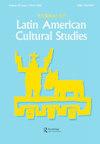Modern and National? The (Non-) Exceptionalism of Colombian Architectural Identity
IF 0.3
4区 社会学
Q4 CULTURAL STUDIES
引用次数: 0
Abstract
Architecture in Latin America is cyclically underpinned by the quest to represent multiple identities: international, national, (Latin) American. During the 1930s, although modernist European architects became the reference for Latin American professionals, they were nonetheless of no help in developing national expressions of modernity. Tracing back the debate to the cultural turmoil of that decade with an eye on older topoi on environmental determinism, this article delves into various texts through which the identity of Colombian architectural modernism was constructed. Firstly, it highlights the link between territory, nation, and historical heritage that underpinned the definition of a system of values seen as typically Colombian but, in fact, comparable to that of other countries. Then, it focuses on the construction of Colombian modernism’s identity as opposed to different Latin American experiences, highlighting the role of local and international actors. The article also explains the centrality given to Bogotá and its architecture because of the climatic differences that made the country’s cool highlands similar to Europe and the USA and, therefore, the place where civilisation, development, and modern architecture were possible for the Colombian elites. Ultimately, this text documents an exemplary case, stressing the non-exceptionalism of the different representations of Latin American national modernisms.现代与民族?哥伦比亚建筑身份的(非)例外主义
拉丁美洲的建筑周期性地以追求代表多种身份为基础:国际、国家和(拉丁)美洲。在20世纪30年代,尽管现代主义的欧洲建筑师成为拉丁美洲专业人士的参考,但他们对发展现代性的国家表达毫无帮助。追溯这十年的文化动荡,着眼于环境决定论上的古老地形,本文深入探讨了哥伦比亚建筑现代主义身份建构的各种文本。首先,它强调了领土、民族和历史遗产之间的联系,这些联系支撑了一个价值观体系的定义,该体系被视为典型的哥伦比亚,但事实上与其他国家相当。然后,它重点关注哥伦比亚现代主义身份的构建,而不是不同的拉丁美洲经验,突出了当地和国际行为者的作用。文章还解释了波哥大及其建筑的中心地位,因为气候差异使该国凉爽的高地与欧洲和美国相似,因此,哥伦比亚精英可以在这里获得文明、发展和现代建筑。最终,本文记录了一个典型的案例,强调了拉丁美洲国家现代化的不同表现形式的非例外主义。
本文章由计算机程序翻译,如有差异,请以英文原文为准。
求助全文
约1分钟内获得全文
求助全文

 求助内容:
求助内容: 应助结果提醒方式:
应助结果提醒方式:


